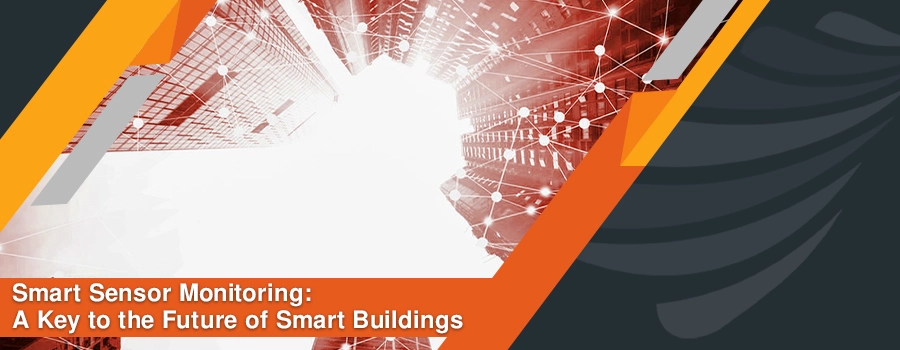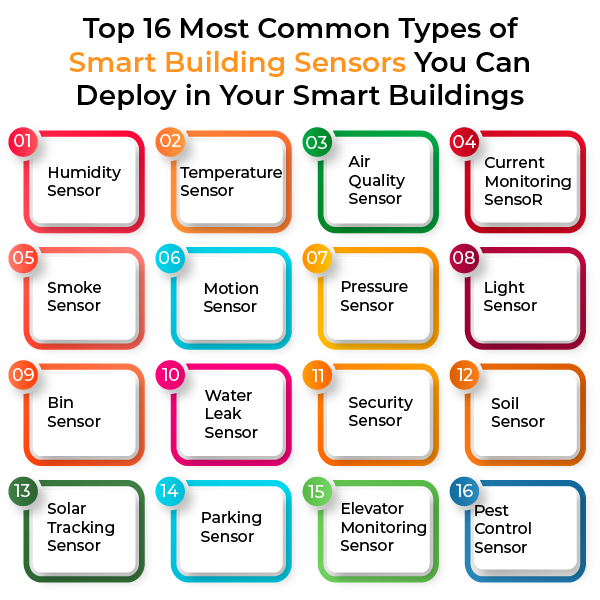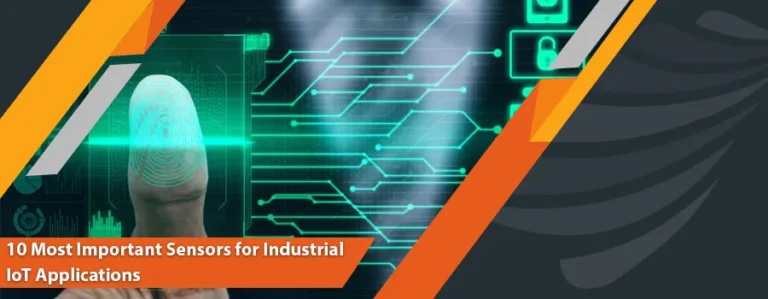Do you need help maintaining the right temperature or humidity in your home or office?
You may need help selecting the best sensor, maintaining sensor health, and approaching multiple vendors. Also, you may find it challenging to check and balance the deployed sensors to ensure they perform well and contribute to the overall comfort of your home or workplace. These issues might resonate daily; you do not need to worry more.
This blog will help you know how to manage and monitor your smart sensors on a single platform – transforming your worries into an efficient strategy for revolutionizing traditional sensor management for smart buildings.
Why Do You Need Smart Building Sensors?
Smart building sensors are specially designed to collect and monitor data on different aspects of buildings, considering their infrastructure and surrounding environment. These sensors use advanced technology to enhance the occupants’ comfort, standards, and safety. Also, it contributes to reducing greenhouse gas emissions and energy consumption to play a positive role in the environment.
Smart building sensors with real-time information allow the building management to make informed decisions. Hence, effective deployment and management of smart sensors help in building sustainability.
What Challenges Can You Face in Building Smart Cities?
We all need to manage things smartly. It is not only a need to ease our lives, but also we rely on it to enhance our security and make better decisions. As we shift towards smart infrastructure, we opt for different sensors according to their application and interest. However, selecting the best sensors is a time-consuming process. Most of our time is used to look for the best vendors and the right sensor. We know that sensors are the most important for smart infrastructure development, but the process becomes hectic and causes hurdles.
Surprisingly, all your hurdles now end with Hive – a smart sensor monitoring and management solution. Hive is an ultimate smart solution that effectively manages, monitors, and streamlines various sensors on a single dashboard.
It is a platform that provides you with a wide range of sensors for your smart homes and buildings and also allows you to take maximum advantage of collected data to make informed decisions. You can put all your sensor management and selection burden on Hive and enjoy smart living.
Top 16 Most Common Types of Smart Building Sensors You Can Deploy in Your Smart Buildings
The sixteen most common types of smart building sensors that you can use to modernize your buildings, home, or workspace are:
1. Humidity Sensor
Humidity sensors measure the level of moisture in the surrounding air. Monitoring humidity levels allows for maintaining indoor air quality within a safe and comfortable range.
2. Temperature Sensor
The temperature sensor monitors the temperature level in the building. It helps to regulate ventilation, air conditioning, and heating while maintaining a comfortable environment for workers. Also, it plays an important role in optimizing energy efficiency.
3. Air Quality Sensor
Air quality sensors detect different aspects of indoor air quality in real-time, including various pollutants and gases in the air that can impact the health of individuals.
4. Current Monitoring Sensor
A current monitoring sensor or current sensor is a device that monitors the flow of electric current through a conductor or circuit. The real-time monitoring of current levels helps to ensure performance optimization and helps in taking rapid actions in any emergency.
These sensors have great applications in different fields, such as energy management, industrial automation, power distribution, and electronic systems.
5. Smoke Sensor
Smoke sensors are essential to install in buildings because they ensure fire safety. By detecting the presence of smoke, flames, or heat, they trigger fire alarms to operate or necessary suppression systems to control the situation on time.
6. Motion Sensor
Motion sensors play a major role in enhancing security and energy efficiency. It turns on the light when someone moves in the room and turns off when people leave it. Also, it activates different safety features like ring alarms if someone enters an unauthorized area.
7. Pressure Sensor
A pressure sensor monitors the pressure of gases or liquids in an environment. It alerts us in real-time if there is an abnormal pressure level. These sensors are widely used in medical, industrial, and automotive industries.
8. Light Sensor
A light sensor or photocell is a device that measures or detects the light intensity in the surroundings. It works by converting light into electrical energy. It is widely used in environmental monitoring, consumer electronics, and industrial automation applications.
9. Bin Sensor
A bin sensor is a device used to detect the level of waste in a bin. The best example of a bin sensor is BinWise – a smart waste management solution. Its sensors detect the level of waste in real-time and send alerts for efficient waste management.
Using a mobile app, the managers can easily track the locations of filled bins, effectively contributing to smart waste management and less fuel and energy consumption.
10. Water Leak Sensor
Water leak sensors detect any leakage in areas where it is not supposed to be, such as mechanical rooms, control rooms, or warehouses. Early detection helps to avoid costly damage and any emergency.
11. Security Sensor
Security sensors are the devices used to detect different types of security threats. They have different forms and have different purposes. Some are contact-sensitive and placed on doors. As magnetic devices, they trigger a security system when any person enters any unauthorized place.
Whatever the type it carries, the primary function of such sensors remains the same – to monitor and alert individuals about any unusual activity that indicates any potential harm or security breach.
12. Soil Sensor
A soil or soil moisture sensor connects with an irrigation system controller and measures the moisture level in the active root zone before every listed irrigation event.
Detecting moisture levels helps to optimize different agricultural activities, crop management, water management, and environmental monitoring. The data provided by soil sensors help farmers make informed decisions about their crops. These sensors can also integrate with data logging systems and connect with smartphones to provide real-time monitoring and remote control of agricultural land.
13. Solar Tracking Sensor
Solar tracking sensors, as a part of the solar tracking system, help to optimize the orientation of photovoltaic cells or panels to capture the maximum amount of sunlight passing by throughout the day.
The basic function of these sensors is to follow the path of sunrays and adjust the position and angle of solar panels accordingly. It helps to ensure that the solar panels are perpendicular to the incoming rays and capture the maximum amount. Overall, it enhances solar panels’ efficiency and energy output and reduces operational costs.
14. Parking Sensor
Parking or proximity sensors are installed on vehicles to assist drivers in parking in a confined space. Integrating various technologies helps the drivers detect obstacles or objects in the desired parking area and provides visual and auditory feedback and alerts.
15. Elevator Monitoring Sensor
Elevator monitoring sensors, as a part of elevator systems, help to enhance efficiency, safety, and maintenance. They are designed to monitor various aspects and operations of elevators in real-time and send feedback for rapid response.
The real-time data helps control emergencies, fire hazards, troubleshooting, and predictive maintenance. They are an integral part of infrastructures to ensure passengers’ or visitors’ safety.
16. Pest Control Sensor
Pest control sensors are used in pest management and agriculture to monitor and control pests in a given environment. These sensors, after integrating with advanced technologies, detect the presence of pests and behavior.
Also, they detect the environmental conditions that could promote the spread of pests. The real-time data helps build efficient pest control strategies and helps in better crop production.
Future of Smart Sensor Monitoring and Smart Buildings
The future of smart city development relies highly on deploying advanced sensors, integrated technology, and networking. The secret of future smart buildings is a unified platform where you can find all your solutions, from purchasing sensors to monitoring and management.
The platform will serve as a central nervous system of smart buildings. The data will be processed and collected from different sensors and will help in effective smart integration, management, and monitoring. Right now, such implementations are started in the form of HIVE – a smart sensor monitoring and management solution. Users can monitor and access all the implemented sensors, like temperature, humidity, and pressure, on one platform. This solution empowers smart industries and communities and delivers better-connected experiences by connecting assets, operations/logistics, and services. Implementing such solutions allows you to experience interactive and optimized buildings where everything will be one click away.
Final Thoughts
Smart sensor monitoring is the ultimate solution for smart city building. Choosing the right sensors helps you to experience maximum benefits and ease at your home or office building. Integrating sensors with advanced technology helps us make informed decisions, improve our lifestyle, enhance security, optimize operations, and allow us to enjoy the beauty of a smart city.






